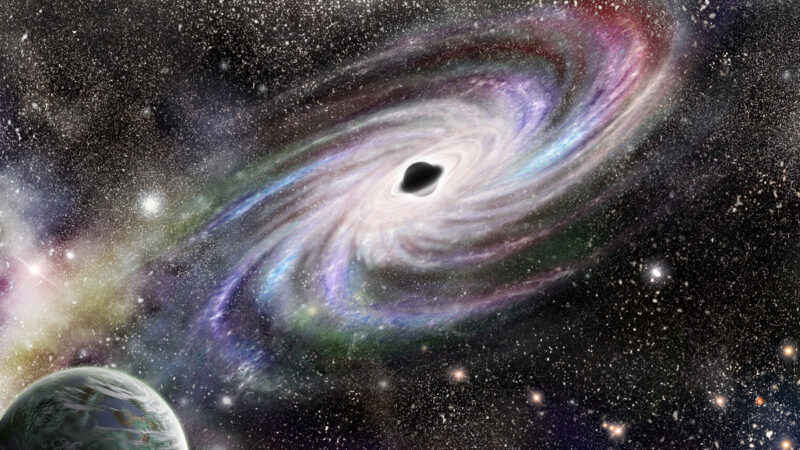[NTD, Beijing, June 16, 2022]Through the Hubble Telescope, astronomers have observed a free black hole for the first time. This black hole is not fixed in any star system, it floats freely in space.
The black holes observed by scientists before this are all fixed in a cosmic region. For example, super black holes are generally located in the very center of a galaxy; many other black holes are combined with stars by gravity to form a two-body system. Scientists theoretically speculate that there should be free-moving black holes, and this observational data proves this for the first time.
Two separate research groups, one led by the Space Telescope Science Institute and the other led by the University of California at Berkeley, both announced this discovery. Their papers have been accepted for publication in The Astrophysical Journal and The Astrophysical Journal Letters, respectively.
Six years of observations from the Hubble Space Telescope show the black hole is about 5,000 light-years from Earth, in the spiral arm of the Milky Way (Carina-Sagittarius), NASA said.
Using Hubble, the researchers captured the effect of the black hole’s gravitational lensing on the surrounding space. Objects that lie between the star and the observer bend or magnify distant starlight, a phenomenon known as gravitational lensing. For this black hole, it distorts the light of a star about 19,000 light-years from Earth in the bulging core region of the Milky Way. The researchers said that the lensing effect of the object on starlight lasted for 270 days, which is one of the evidences they speculate that the object is a black hole.
Because the black hole was discovered by two separate research groups, it has two codenames: MOA-2011-BLG-191 and OGLE-2011-BLG-0462.
NASA speculates that the black hole is the product of a supernova explosion of a star 20 times the mass of the sun. Due to the asymmetry of pressure in all directions during the explosion, the black hole received a kicking force that ejected itself like a “cannonball” from the system it was in.
Kailash Sahu, who led the study from the Space Telescope Science Institute, told Forbes that the precursor star that formed the black hole was about 20 to 25 times the mass of the sun, an O type stars. O-type stars are still burning hydrogen, which can be up to 90 times the mass of the sun and a million times brighter.
Sahu said the black hole is about 7.1 times the mass of the sun and has a diameter of about 26 miles within its event horizon, or the black hole’s boundary. NASA estimates the black hole is moving at 100,000 miles per hour. At this rate, it will take less than 3 hours to travel from the earth to the moon.
Although this observation only saw it appear once through gravitational lensing, the researchers believe it may be possible to track it down. “We estimate that the black hole is located in a zone of high-density matter between galaxies,” Sahu said. It is likely that it is constantly absorbing material from these interstellar systems, and the process emits X-rays and radio waves. Therefore, through X-ray and radio wave observations, it is possible to detect this black hole, and that information will provide more clues about this black hole.
Sahu also said that theory estimates that there are 1 million to 2 million free black holes in the Milky Way, with the nearest black hole at least 80 light-years away from Earth.
(Transfer from The Epoch Times/Editor-in-charge: Tang Jia)
URL of this article: https://www.ntdtv.com/b5/2022/06/16/a103457181.html
